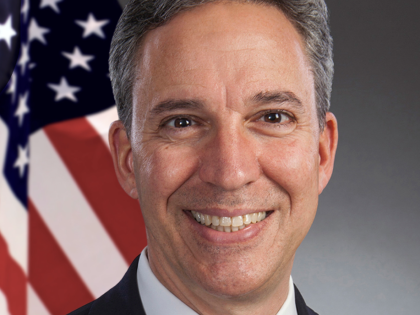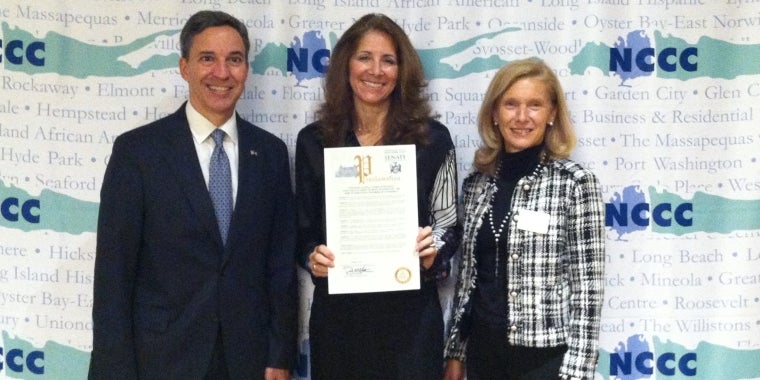
Senate Completes Early Passage of State Budget
Jack M. Martins
April 4, 2011
-
ISSUE:
- Budget

011-12 State Budget Reduces Spending, Does Not Raise Taxes and Creates Jobs
The New York State Senate has completed passage of the 2011-12 state budget one day prior to the April 1st budget deadline. The budget achieves the Senate Republicans’ goals of reducing state spending, not raising taxes and creating new private sector jobs.
“With this budget we have begun to restore hope to millions of New Yorkers who want state government to spend less, tax less and do more to encourage job creation,” Senate Majority Leader Dean G. Skelos said. “The budget achieved all of these goals by reducing overall state spending by getting rid of some of the devastating tax and fee increases enacted by
Democrats over the past two years, and by passing other measures like Recharge NY, to help businesses create new private sector jobs.”
The budget was praised by business groups across the state, including the Business Council which said it provided “hope for growth.”
In his first year in the New York State Senate, Senator Jack M. Martins followed through on his commitment to ease the burden on taxpayers but controlling state spending while not instituting any additional taxes and fees.
“Not only do we have an on-time budget for the 2011-2012 fiscal year, but we went through the process with both sides of the aisle working together – the budget passed with overwhelming support in the legislature. Most importantly, we passed a fiscally-responsible budget that closed a $10 billion deficit without raising any taxes or fees,” Senator Martins said.
While the Senate aimed to pass a fiscal responsible budget, it did make education a priority by restoring millions of dollars in state aid to school districts that was cut in the Governor’s proposed budget.
“This budget factors in the need to continue to provide significant funding for our students and seniors while putting us back on the road to fiscal recovery,” Senator Martins said.
Senate Republicans stood with the Governor to oppose the extension of the personal income tax surcharge. For thousands of businesses and many families, this will mean $1 billion in tax relief this year and $4 billion in tax relief next year. That alone is one of the largest tax reductions in state history. It will allow businesses to keep more of their money and reinvest it to promote growth and job creation.
“This is just the start. Senate Republicans will continue our efforts to get rid of onerous taxes like the MTA payroll tax,” Senator Skelos said. “And we will continue to push for mandate relief and the enactment of a property tax cap, which the Senate passed this year but the Assembly has not acted on.”
“This budget included tough choices and difficult cuts that had to be made to close the deficit,” Senator Skelos said. “But it also points New York in a new direction towards lower taxes more jobs and a brighter future.”
2011-12 STATE BUDGET HIGHLIGHTS
LESS SPENDING, FEWER TAXES, MORE JOBS
> The $132 billion spending plan reduces year-to-year spending by two percent, trims state operations expenditures by 10 percent, and forces nearly every area of State government to increase efficiency, maximize performance and do more with less.
> The budget eliminates a $10 billion deficit caused by Democrat overspending without raising taxes or borrowing, and it contains significant fiscal reforms. The permanent cap on Medicaid and education spending will ensure that the Legislature and Governor live within their means.
> Next year’s projected budget deficit has already been reduced from $15 billion to a more manageable $2 billion - - less than one percent of the overall budget.
> The budget includes a plan to make state government smaller by consolidating the number of state agencies, authorities and commissions by 20 percent.
> The budget allows the PIT surcharge to expire, which will mean $1 billion in tax relief for businesses and families this year and a $4 billion in tax relief next year.
> The PIT surcharge raised taxes for thousands of small businesses across the state, taking away money that could have been invested in expansion and job growth. Now they will be able to keep that money to reinvest in their businesses.
> Starting April 1st – the state sales tax exemption on clothing will be restored so there will be no state sales tax for clothing purchases under $55. After one year, it increases to purchases under $110. Democrats eliminated the sales tax exemption last year.
> The budget makes the Power for Jobs program permanent. Now named Recharge NY, this program will provide a steady supply of low-cost hydro-power to businesses throughout the state – especially manufacturers – saving them thousands of dollars in energy costs.
> We enhanced the Excelsior Jobs Program to include expanded tax credits to encourage the creation of new private sector jobs. The budget amends the calculation of the credit from a percentage of the salary and benefits capped at $5,000, to 6.85 percent of gross wages with no cap.
> We increased increasing the research and development credit from 10 percent to 50 percent of the federal credit to help encourage growth in high tech R&D jobs.
> The budget extends the financial services tax investment tax credit for four years (until 10/1/15) for the corporation franchise tax, PIT, bank tax and insurance tax.
> We significantly rolled back the 5,000 percent tax increase that Democrats placed on gross sales of convenience stores and mom and pop stores. The budget cuts the tax from $5,000 down to $300.
> The budget includes an economic development incentive package to help communities impacted by the closings of prison and youth facilities by providing significant tax breaks to attract new businesses and jobs.
> The package includes tax credits for job creation, capital investments, job training, real property taxes and a sales tax refund for businesses that locate near a closed facility.
> As part of the budget, Governor Cuomo committed his support to enacting the UB2020 plan that will help spur economic development and job creation and revitalize the economy in Western New York.
> The budget creates 10 regional economic development councils to act as one stop shops for all state supported economic development and business assistance programs in each region.
> Tourism and the fishing industry on Long Island will be helped by the repeal of the saltwater fishing license fee.
> The budget also restores funds for important agriculture programs such as integrated pest management, pro-dairy, NY FarmNet and the NY Farm Viability Institute.
EDUCATION
> Thanks to the leadership of the Senate Republican conference, the enacted budget restores $272 million in Executive Budget cuts, including $57 million for summer school and special education, funding to maintain Schools for the Blind and Deaf and restores $3 million in funding for libraries.
> The budget achieves regional balance in school aid and ensures that every region of the State is treated fairly and equitably. We fought to redirect funds to Upstate, rural school districts that were hit the hardest by the Governor’s proposed cuts.
> This budget directed more money to high needs school districts than last year’s budget.
> In addition, Senate Republicans fought to ease the cuts to suburban districts where residents pay some of the highest taxes in the nation. We also included funds to avoid $190 million in cost shifts that would have impacted property taxpayers.
> The budget provides for a two-year appropriation for school aid that will enable aid to grow next year by about four percent, or $800 million.
> For higher education, $86 million was added for SUNY hospitals and community colleges.
HEALTH CARE
> The budget restores $22 million for the EPIC program to help ensure prescription drug coverage for seniors.
> We enacted major reforms to the state’s out-of-control Medicaid spending, including imposing a cap on Medicaid expenditures and restructuring Medicaid to be more efficient and get better results for patients.
> We agreed with the recommendations of the Medicaid Redesign Team to sharply reduce Medicaid spending and to initiate care management for fee for service Medicaid patients.
> We addressed the most costly patients to reduce costs while maintaining care.
> The Medicaid Redesign Team recommended reducing Medicaid spending by $2.4 billion and this budget achieves that goal. These reductions should also reduce Medicaid outlays by county governments.
Share this Article or Press Release
Newsroom
Go to Newsroom
